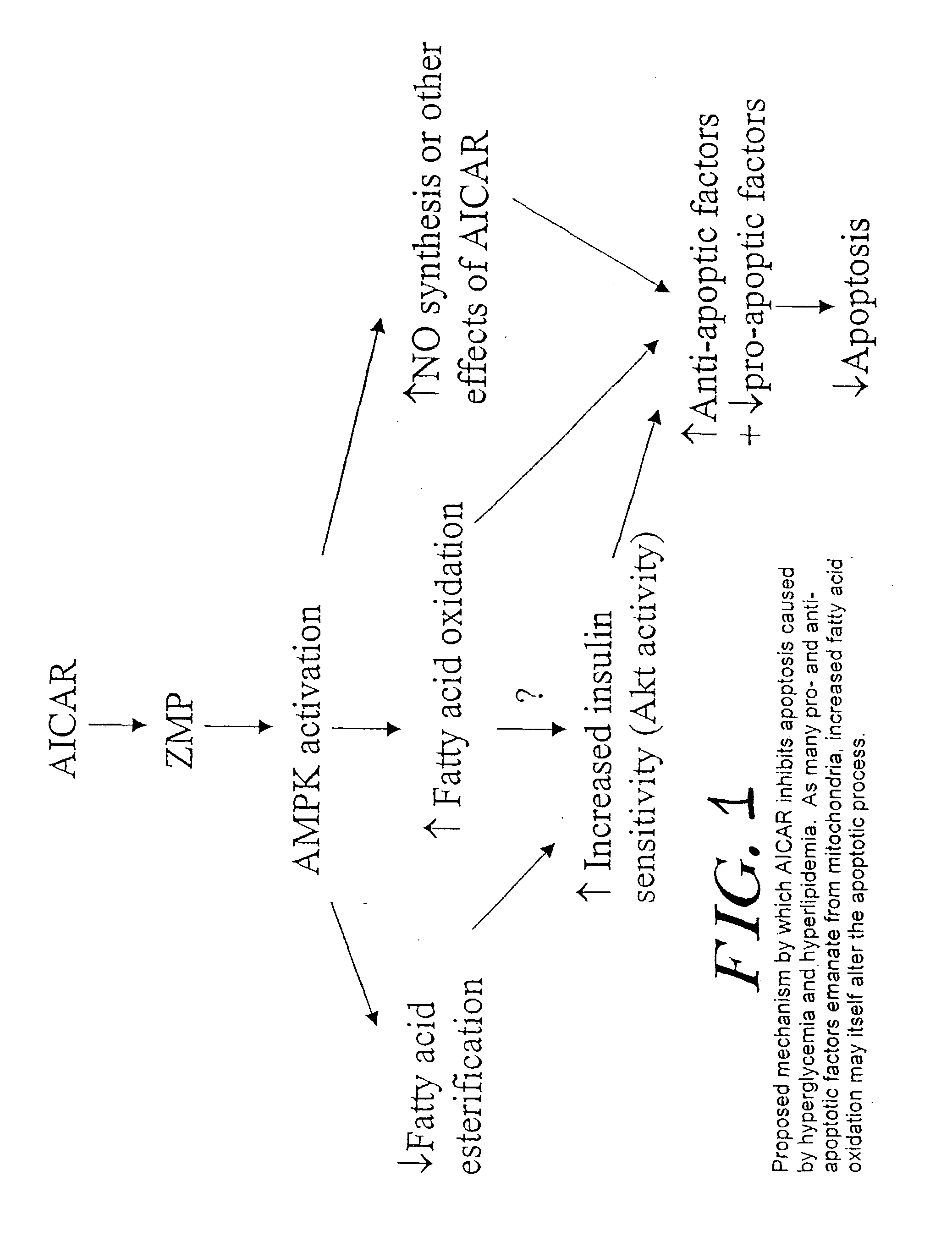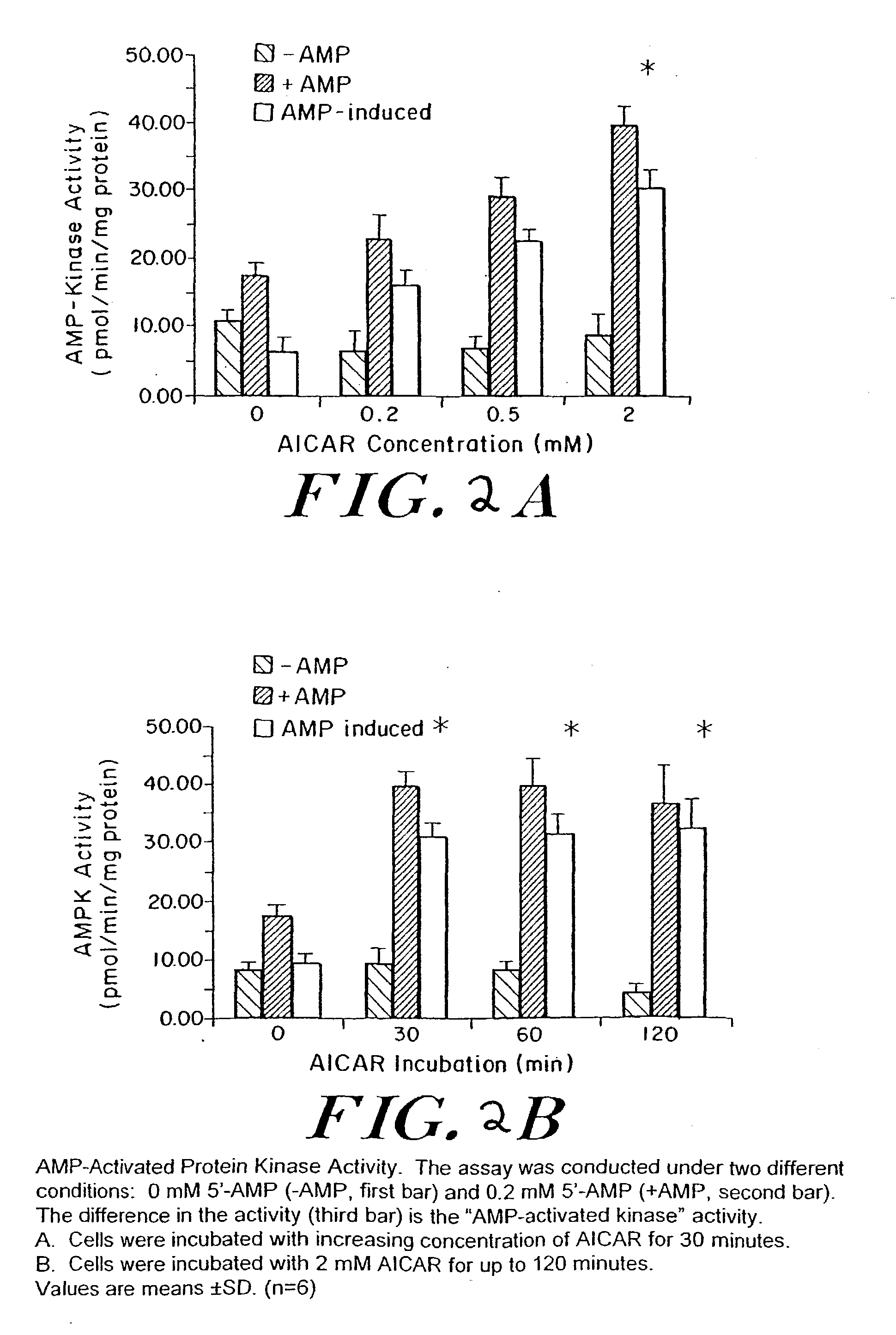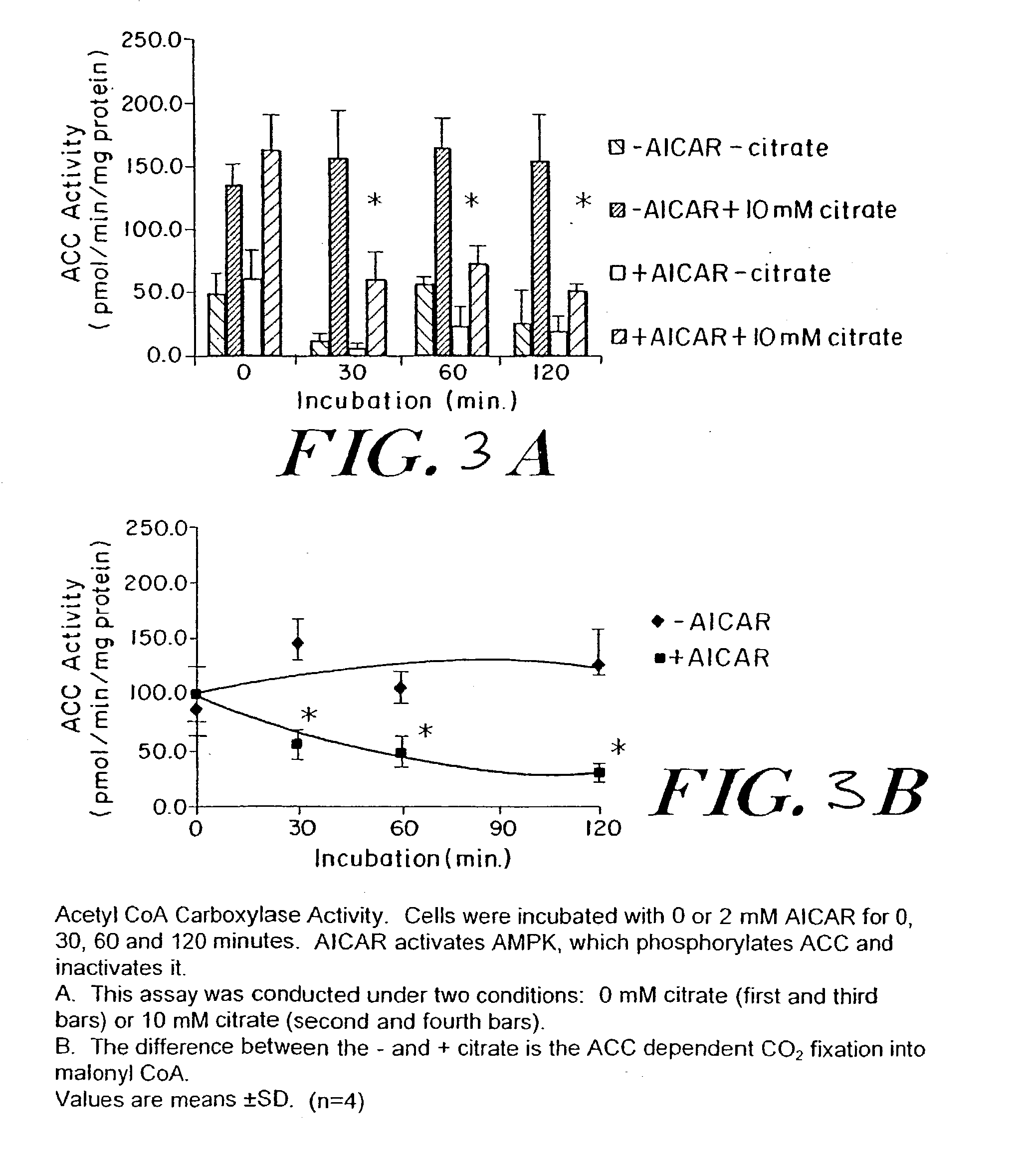Methods fo treating conditions associated with insulin resistance with aicar, (5-amino-4-imidazole carboxamide riboside) and related compounds
a technology of aicar and aicar, which is applied in the field of treating conditions associated with insulin resistance with aicar, can solve problems such as poor substrate for phosphatases, and achieve the effects of reducing fat build-up, increasing muscle mass, and increasing insulin sensitivity
- Summary
- Abstract
- Description
- Claims
- Application Information
AI Technical Summary
Benefits of technology
Problems solved by technology
Method used
Image
Examples
example 1
Studies with Cultured HUVEC
[0060] In order to demonstrate the presence of AMP-dependent protein kinase in HUVEC, confluent cells were incubated with varying concentrations of AICAR for 30 minutes (FIG. 2A). The enzyme was assayed in a reaction mixture containing either no AMP or 0.2 mM 5'-AMP. The difference in the activity is the AMP-activated kinase activity. The kinase activity increased from 6.7.+-.0.2 pmol / min / mg protein at 0 mM AICAR incubation, to 15.8.+-.0.4 at 0.2 mM (P=0.05), 22.5.+-.0.3 at 0.5 mM (P=0.05), and 30.9.+-.0.2 at 2 mM AICAR incubation (P=0.002). With increasing AICAR concentration, there was a significant increase in AMPK activity. This indicates the presence of AMPK and AMPKK in HUVEC. Incubation of cells with 2 mM AICAR showed an increase in AMPK activity as compared to control. The change was seen at 30 minutes and persisted for at least 120 minutes (FIG. 2B). The kinase activity increased from 7.3.+-.1.8 at 0 minutes to 30.8 at 30 minutes (P=0.01), 31.5 at...
example 2
Effect of AICAR on Apoptosis in Human and Bovine Pericytes
[0069] Human and bovine retinal pericytes were plated in 6 well plates, grown in a 37.degree. C., 5% Co.sub.2 incubator with SmBM medium and treated with AICAR. Apoptosis was induced by incubating the cells with a medium containing 0-0.5 mM palmitic acid for 3 days. Apoptotic cells were determined by conventional TUNEL staining. Ceramide and DAG levels were measured the by diacylgycerol kinase method using 32P-ATP. To determine the effects of AICAR, 1 mM AICAR was added for these 3 day periods.
[0070] Increased fatty acid levels were added to the medium to promote apoptosis in human and bovine retinal pericytes in a dose dependent fashion (0.5% with 0.1 mM palmitate vs 27% with 0.5 mM palmitate). The apoptotic rate was further increased by incubating the cells with high glucose. (With 0.2 mM palmitate, 4% of the cells were apoptotic in 5 mM glucose vs. 7% of the cells in 20 mM glucose.) This increase in apoptosis was accompani...
example 3
Effects of AICAR on Mitochondrial Membrane Potential, Free Fatty Acid Oxidation and Free Fatty Acid Incorporation Into Diacylglycerol in HUVEC--Relationship to Apoptosis Levels
[0072] Incubation of HUVEC with 30 mM glucose for 16 hrs decreased free fatty oxidation by 50% (FIG. 7A) and increased free fatty acid incorporation into diacylglycerol (DAG) (i.e., esterification) by 40% (FIG. 7B). These changes were accompanied by a significant decline in mitochondria membrane potential (FIG. 7C). Treatment with 1 mM AICAR in 30 mM glucose prevented all these changes.
[0073] The effects of AICAR on HUVEC in 30 mM glucose were consistent with the scheme depicted in FIG. 1, in which a high glucose concentration increases apoptosis by decreasing free fatty-acid oxidation and increasing esterification. AICAR prevented these changes as well as the decreased mitochondrial membrane potential caused by hyperglycemia. Because decreased mitochondrial membrane potential promotes cell apoptosis, this obs...
PUM
| Property | Measurement | Unit |
|---|---|---|
| time | aaaaa | aaaaa |
| periods of time | aaaaa | aaaaa |
| weight | aaaaa | aaaaa |
Abstract
Description
Claims
Application Information
 Login to View More
Login to View More - R&D
- Intellectual Property
- Life Sciences
- Materials
- Tech Scout
- Unparalleled Data Quality
- Higher Quality Content
- 60% Fewer Hallucinations
Browse by: Latest US Patents, China's latest patents, Technical Efficacy Thesaurus, Application Domain, Technology Topic, Popular Technical Reports.
© 2025 PatSnap. All rights reserved.Legal|Privacy policy|Modern Slavery Act Transparency Statement|Sitemap|About US| Contact US: help@patsnap.com



